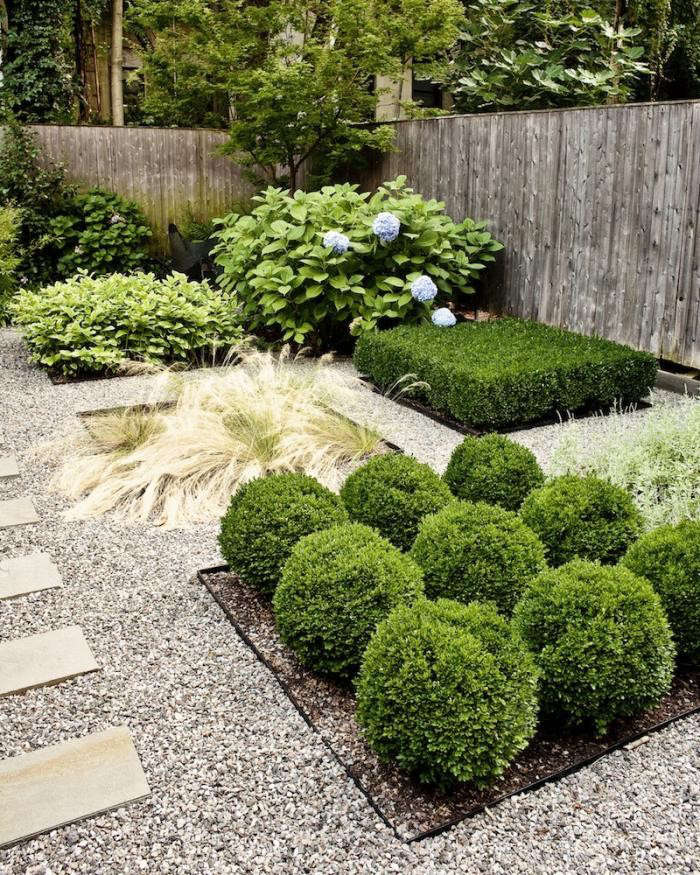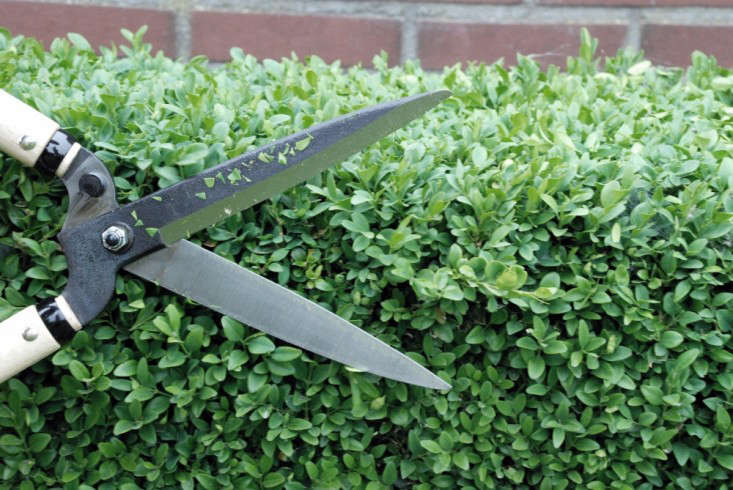Boxwood, Buxus sempervirens: “The Lovable Rogue”
Though we should know better, we still love box despite the risky reputation it has gained in the 21st century. A historical lynchpin through the ages of gardening, box has been valued by Romans, Elizabethans, the various Louis’ at Versailles and the creatives behind the Arts and Crafts movement. And everything in between. It is synomymous with cottage garden style and is a byword in formality. It will happily grow into any shape you decide to clip it into.
But. The cheerful “doer” has taken quite a knock in recent years and Buxus sempervirens is approached, in its native England at least, with caution if not fear because of its susceptibility to a fungal disease called box blight. Many gardeners are giving up and replacing their box with something hardier. Others are steadfast in their support. Here’s everything you need to know about box to make your own decision:
Above: For more photos, see Boxwood in our Gardenista Gallery.
Box blight travels in warm, damp conditions so it is a peculiar punishment that England, the home of box, offers the perfect setting for its destruction.
Above: Photograph by Kendra Wilson.
Some head gardeners continue to work with schemes that appear to depend on box, spraying with chemical fungicide every few weeks during the growing season. Others have done away with it altogether and have had a re-think (note the use of clipped yew at the front of these borders). For more ideas, see How to Eliminate Boxwood Blight: Plant a Different Shrub.
Regular old Buxus sempervirens is a better investment than the dwarf variety Buxus sempervirens ‘Suffruticosa’, which is more prone to disease.
Above: Photograph courtesy of Foras Studio.
In a townhouse garden in Brooklyn, Susan Welti of Foras Studio chose plants that would stand up to heat, including boxwood clipped into balls, Solomon’s seal, Russian sage, Mexican feather grass, and hydrangeas.
Above: Photograph via Okatsune.
Cheat Sheet:
- Best suited for: a low-level boundary, decorative edging, or as topiary.
- Will tolerate deep shade so is ideal under trees. (Box grows well in containers but must be watered regularly: leaf growth is dense so rainwater does not find its way down into the roots.)
- Hardy in growing zones 6, 7, and 8.
Keep It Alive:
- Shaggy box is more disease-resistant: hard clipping causes stress and cut leaves are an invitation to fungal spores.
- Ideally, box should be cut twice a year when there is no danger of frost and no rain on the horizon. (Those in northern climes will find themselves clipping in June and maybe again in September.)
- Plant box as bare root whips in winter, the smaller the better. It will establish best if planted small, like all hedging.
Above: A looser topiarized look is no bad thing, as with the boxwood hedges at Dan Pearson’s Old Rectory. Photography by Nicola Browne and Dan Pearson Studio.
Read More:
Above: Photograph by Nicole Franzen for Gardenista.
N.B.: For more landscaping ideas, explore our Garden Design 101 guides. Need tips for selecting your shrubs? See:
- Shrubs: A Field Guide for information on planting, care, and design
- Looking for a bush to blossom? Why not try Hydrangea 101 or Azalea 101.
Finally, get more ideas on how to successfully plant, grow, and care for boxwood with our Boxwood: A Field Guide.
Finally, get more ideas on how to plant, grow, and care for various shrubs and hedges with our Shrubs: A Field Guide.

















Have a Question or Comment About This Post?
Join the conversation